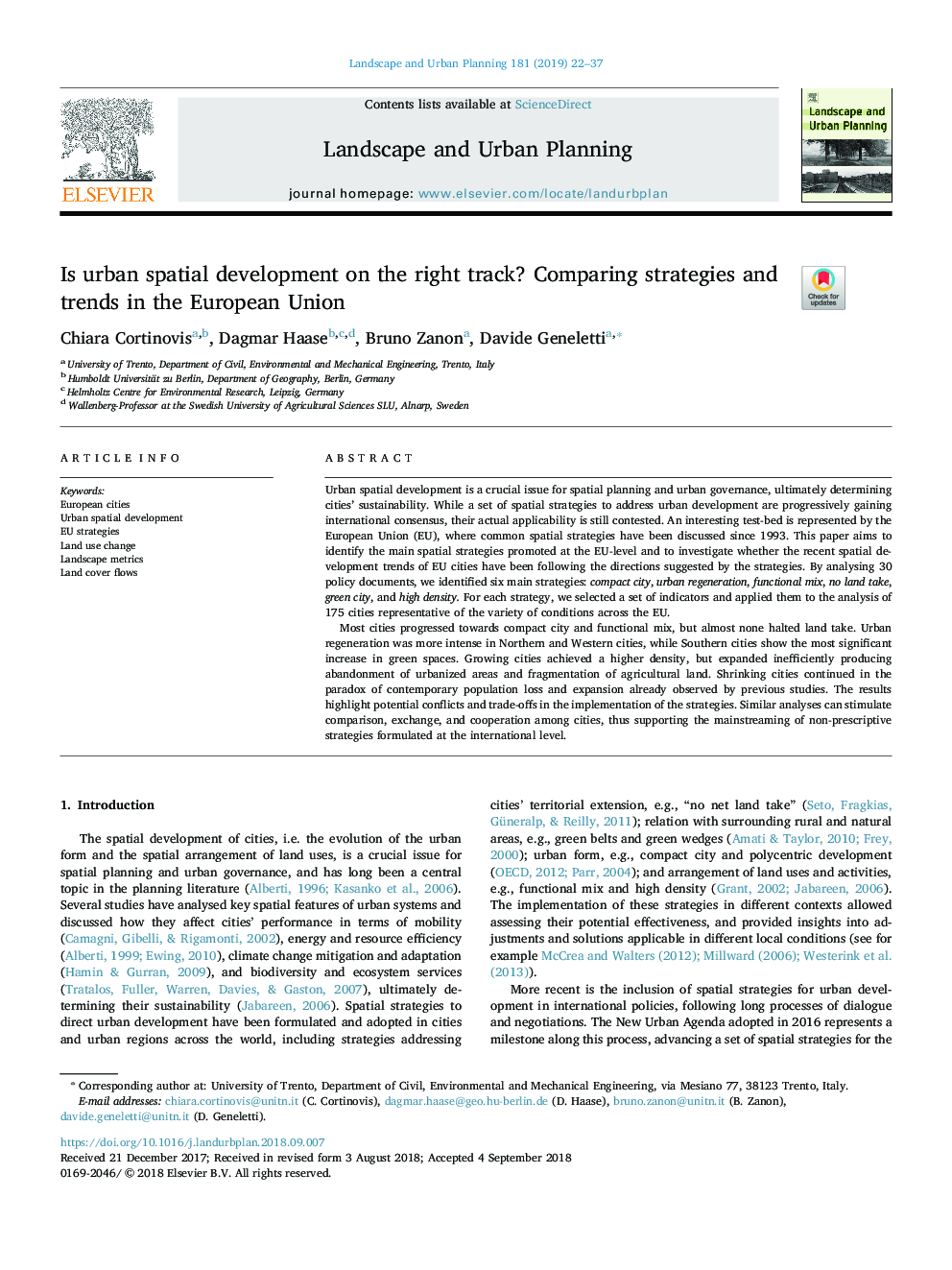| Article ID | Journal | Published Year | Pages | File Type |
|---|---|---|---|---|
| 11020392 | Landscape and Urban Planning | 2019 | 16 Pages |
Abstract
Most cities progressed towards compact city and functional mix, but almost none halted land take. Urban regeneration was more intense in Northern and Western cities, while Southern cities show the most significant increase in green spaces. Growing cities achieved a higher density, but expanded inefficiently producing abandonment of urbanized areas and fragmentation of agricultural land. Shrinking cities continued in the paradox of contemporary population loss and expansion already observed by previous studies. The results highlight potential conflicts and trade-offs in the implementation of the strategies. Similar analyses can stimulate comparison, exchange, and cooperation among cities, thus supporting the mainstreaming of non-prescriptive strategies formulated at the international level.
Related Topics
Life Sciences
Agricultural and Biological Sciences
Ecology, Evolution, Behavior and Systematics
Authors
Chiara Cortinovis, Dagmar Haase, Bruno Zanon, Davide Geneletti,
